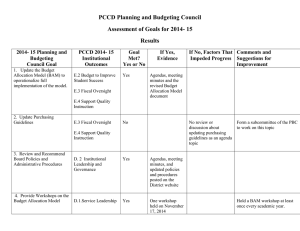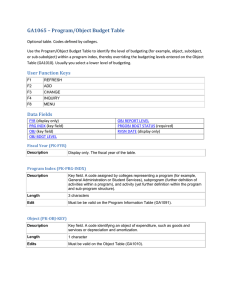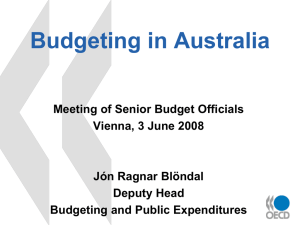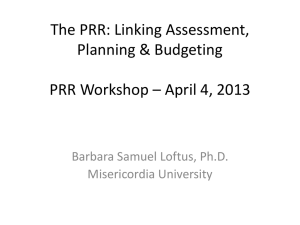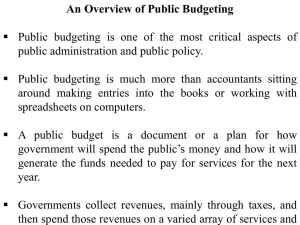F-12 MAN.FIN
advertisement
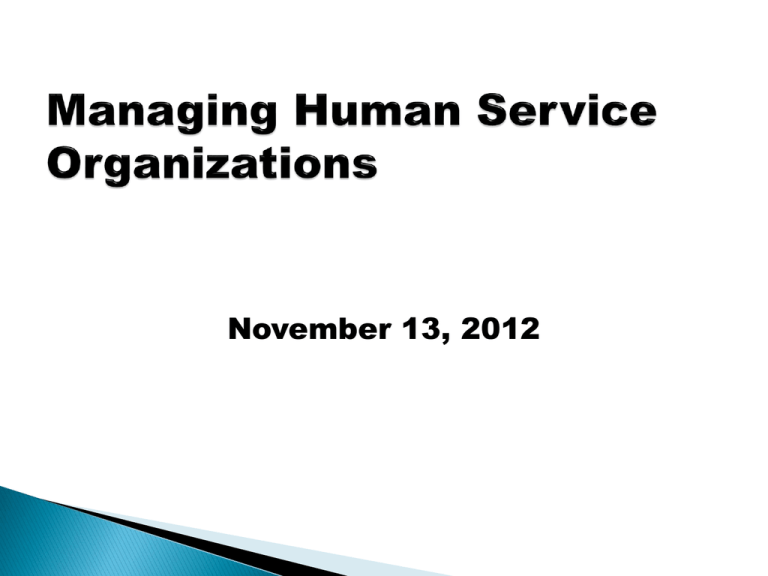
November 13, 2012 A set of informed and competent management responses to environmental (internal and external) demands that continuously improve an agency’s capacity to serve its customers. Patti, R.J., (2009). The Handbook of Human Services Management Patti (1977) ◦ Empirical study 90 managers Method: Participants were asked to prioritize 13 activities according to time devoted to each in a typical work week Cashman (1978) ◦ Conducted a study that found that human services managers spent the greater part of their time administering, communicating, planning, and implementing Files (1981) ◦ Identified and prioritized 14 management task according to the proportion of time devoted by each of 50 human services managers Secure and manage resources that are consumed by services and activities that penetrate outputs and achieves outcomes Leadership Analytic Interactional Boundary Spanning Policy Practice Facilitating Futuring Managing Resources Communicating Aligning Leveraging Resources Supervision Teaming Advocating Organizing Integration of 2 previous models: Triangle of Practice Model + Core Competencies Model Communicator- Impact of Technology (voicemail, email, Skype, Fax, telecommute) Boundary Spanner- cluster of activities Futurist- Forecast Trends; “Read the Environment” Organizer- Aligning and Staffing Resource Administrator-Cost accounting, pricing, operations budgeting, financial reports ◦ Managing and Levering Resources Evaluator- Needs Assessments (new trend) Policy Practitioner- Read and INTERPRET federal, state, Advocate- 1939 Hatch Act; Policy Advocacy v. Case Teaming- Boss v. Coach; Stages of Development (Forming, Supervisor- Pay attention to the small things (lunch, Facilitator- “Instrument of Change” Evaluator- Is it working? Does it align with the mission and local policies Advocacy Storming, Norming, etc.) parking, breaks); Legal statement? Goals? Organizational Type Primary Funding Source Public •Government (legislative) allocations •Occasional private funds for special purposes (such as Fannie Mae support for computerization) Non-profit •Direct contributions (bequests, donations) •Fees for services •Government grants and contracts •Foundations •Campaigns (e.g. United Way, Combined Federal Campaign) •Medicaid/Medicare For-Profit •Fees for services •Government grants and contracts •Medicaid/Medicare Incremental budgeting • Zero-based budgeting • • Planning Programming Budgeting System • • • Line Item Budget Functional Budget Performance Budget At any given time, administrators are concerned with 3 different fiscal years: ◦ Prior, Current, and Next. Standard fiscal years are typically: ◦ October to September (federal) ◦ July to June (state) ◦ January to December (calendar) • While administrators do not necessarily do all budgeting personally, they must oversee the following: – Hire and supervise appropriate personnel – Be able to talk the language and communicate with fiscal staff – Be able to select and work with external auditors • While administrators do not necessarily do all budgeting personally, they must oversee the following: – Associate fiscal issues with program matters and client concerns – Translate fiscal reports to appropriate auditors – Insure quality control of financial systems – Ask the right questions at the right times • • Of the 12 core practice competencies mentioned as part of the Core Competencies Model for Management in Human Services 2 relate to finance: leveraging resources & managing resources Diversified Funding Sources • Be aware of recent federal legislation • Follow IRS requirements • Board members actively involved in all stages of the budget cycle • Yearly Audit • Internal Controls •Measures that might prevent embezzlement: Thorough background checks of staff Policies against nepotism Personnel policies that require the reporting of suspected fraudulent or unethical activity Protection of whistleblowers REQUIRING 2 SIGNATURES ON CHECKS—HealthReach Regular backup of computers Very strict policies on the use of agency credit cards—UNC-CH DEVELOPMENT OFFICE Planning and Development Stage Implementation Budget Assessment Cost Analysis Business Administration Functional Communication Leadership Business Administration Functional Communication Leadership Knowledgeable of Laws Understanding of People Critical Thinking Cost Accounting Negotiating/ Motivation Flexibility/Adaptabil ity Financial Reporting Share Info=give advice Problem Solving Budgeting/Pricing Emotional Intelligence Decision Making Needs Assessments Boss v. Coaching Detail-Oriented Forecast Trends Emphasize Human Element Delegation Performance Management Knowledge v. Skills Advocacy (Organizational) The U.S. economy is increasingly mixed ◦ Services occur through the participation of public, nonprofit, and for-profit organizations Increased competition between nonprofit and for-profit organizations Economic downturn Embezzlement Staff Diversity & Cultural Competence

